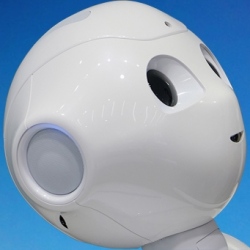
A new report from the Oxford Martin School and Citi considers the risks of job automation to developing countries, estimated to range from 55% in Uzbekistan to 85% in Ethiopia, a substantial share in major emerging economies, including China and India (77% and 69% respectively).
The report, Technology at Work v2.0: The Future Is Not What It Used to Be, builds on 2013 research by Oxford Martin School’s Carl Benedikt Frey and Michael Osborne, who found that nearly half of U.S. jobs could be at risk of computerization (as KurzweilAI reported), and on the first Technology at Work report, published in 2015.
The Future is Not What is Used to Be provides in-depth analysis of the vulnerabilities of countries and cities to job automation, explores what automation will mean for traditional models of economic growth, and considers how governments can prepare for the potentially disruptive impacts of job automation on society.
Key areas of analysis in the report include:
While manufacturing productivity has traditionally enabled developing countries to close the gap with richer countries, automation is likely to impact negatively on their ability to do this, and new growth models will be required.
The impact of automation may be more disruptive for developing countries, due to lower levels of consumer demand and limited social safety nets. With automation and developments in 3D printing likely to drive companies to move manufacturing closer to home, developing countries risk :premature de-industrialisation.”
Even within countries, the impact of automation will lead to the divergence of the fortunes of different cities. While a number of cities may have been affected by, for example, offshoring of manufacturing in the past, the expanding scope of automation now means that even low-end service jobs are at risk, making a different set of cities vulnerable.
Risk of total U.S. employment at risk continues since the 2013 study at about 47 percent. Cities in the U.S. most at risk included Fresno and Las Vegas; least at risk include Boston, Washington DC, and New York. In relatively skilled cities, such as Boston, only 38% of jobs are susceptible to automation. In Fresno, by contrast, the equivalent figure is 54%. The computing revolution has been closely linked to the fortunes of U.S. cities, with cities that became centers of information technology gaining a comparative advantage in new job creation that has persisted since. The tendency of skilled jobs to cluster in initially skilled cities has, since the computer revolution of the 1980s, contributed to increased income disparities between cities.
Digital industries have not created many new jobs. Since 2000, just 0.5% of the US workforce has shifted into new technology industries, most of which are directly associated with digital technologies.
The largest number of job openings in the coming decades is projected to be in the health sector, which is expected to add more than 4 million new jobs in the U.S. from 2012 to 2022.
Most investors by surveyed by Citi feel automation poses a major challenge to societies and policymakers, but are optimistic that automation and technology will help to boost productivity over time, and believe that investment in education will be the most effective policy response to the potential negative impacts of automation.
